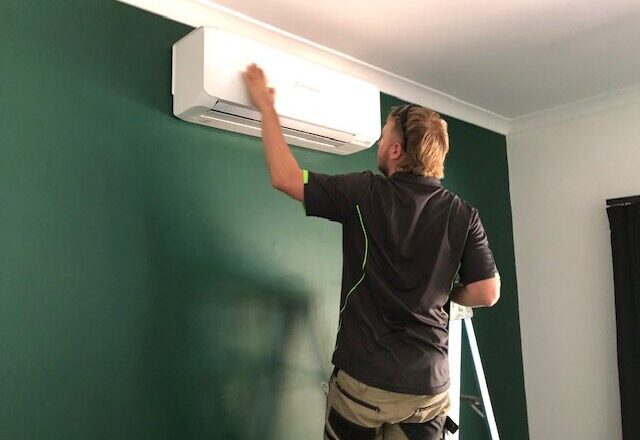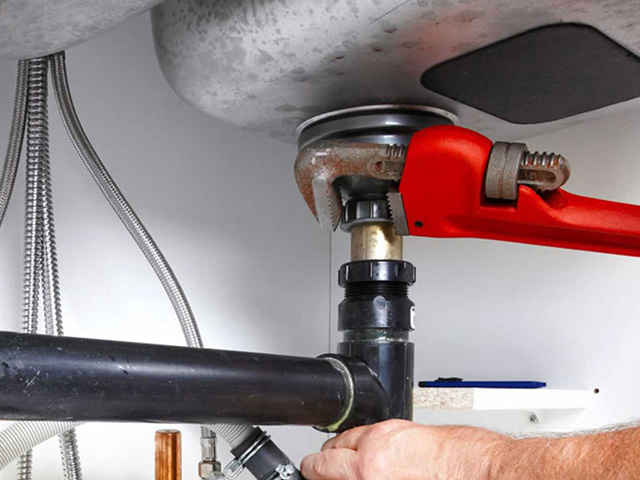Basement flooding can be a nightmare for any homeowner. It brings with it not only the hassle of cleaning up the mess but also the risk of property damage, structural issues, and health hazards such as mold. When the cause of the flooding is plumbing-related, the situation can be even more frustrating because it might indicate ongoing issues that could recur if not addressed properly.
In this blog post, we’ll cover the essential steps you need to take if your basement floods due to plumbing issues, how to prevent future floods, and how to mitigate the damage. Whether the water comes from a broken pipe, a malfunctioning sump pump, or a backed-up sewer line, acting quickly and appropriately can make all the difference.
1. Prioritize Safety First
The first and most important thing to do when you discover a flooded basement is to ensure your safety and the safety of anyone else in the home. Water and electricity are a dangerous combination, so here are the initial steps to take:
- Turn off the electricity: If you suspect water has reached electrical outlets, appliances, or your circuit breaker, it’s essential to shut off the electricity to the affected area. If your breaker is located in the flooded basement, do not attempt to shut it off yourself; instead, call a professional to help.
- Check for gas leaks: Flooding can sometimes cause damage to gas lines or appliances. If you smell gas or suspect a leak, immediately leave the house and call your gas company or emergency services.
- Assess water contamination: Water from a plumbing issue could range from clean water (from a burst supply pipe) to contaminated water (from a sewer line backup). If the water is contaminated or “black water,” it can contain bacteria and pathogens, so avoid contact and call a professional for cleanup.
2. Stop the Source of Water
Once you’ve ensured your safety, it’s time to stop the source of the flooding if possible. The quicker you can control the flow of water, the less damage it will cause.
- Shut off the main water supply: If the flooding is due to a burst or leaking pipe, locate your home’s main water shutoff valve and turn it off to stop more water from entering the home.
- Check for pipe blockages: If the flooding is caused by a clogged or backed-up pipe, such as a sewage line, you won’t be able to stop the water from flowing without professional help. Avoid using other plumbing fixtures in the house until the blockage is cleared.
- Call a plumber: In most cases, when plumbing issues lead to a basement flood, you’ll need a professional plumber to assess and fix the problem. Whether it’s a broken pipe, a faulty sump pump, or a blocked drain, attempting to fix plumbing issues yourself can lead to further damage or incomplete repairs.
3. Document the Damage
Before you start cleaning up, it’s important to document the damage for insurance purposes. Most homeowners’ insurance policies cover flooding caused by plumbing failures, so taking detailed notes and photos will help support your claim.
- Take photos and videos: Capture the extent of the flooding, the damage to your belongings, and any visible signs of the cause, such as a broken pipe or a malfunctioning sump pump.
- Make an inventory: Create a list of the damaged items, including furniture, electronics, and personal belongings. If possible, include the value of each item.
- Contact your insurance company: As soon as possible, notify your insurance company about the flooding and provide them with the documentation you’ve gathered. They’ll guide you on how to proceed with the claim, and in some cases, they might send an adjuster to assess the damage.
4. Start the Cleanup Process
Once the flooding has been contained, and you’ve documented the damage, it’s time to start the cleanup process. It’s important to act quickly, as standing water can cause significant damage and encourage the growth of mold and mildew within 24 to 48 hours.
Remove the Water
The first step is to remove as much water as possible. Depending on the severity of the flooding, you may need to use one or more of the following methods:
- Wet/dry vacuum: A wet/dry vacuum is ideal for removing small to moderate amounts of water. You can rent these from most hardware stores if you don’t have one.
- Sump pump: If the flooding is due to a sump pump failure, it may need to be repaired or replaced. Once it’s working, it should help to drain the water.
- Submersible pump: In cases of severe flooding, a submersible pump might be necessary. These pumps can move large volumes of water and are typically used in deeper floods.
- Call a water damage restoration company: If the flooding is extensive or the water is contaminated, it’s best to call in professionals. Water damage restoration companies have specialized equipment to remove water and dehumidify the space safely.
Dry Out the Basement
After the water has been removed, the basement will need to be thoroughly dried to prevent mold growth.
- Use fans and dehumidifiers: Set up industrial-grade fans and dehumidifiers to circulate air and remove moisture from the air. It might take several days to fully dry out the space.
- Open windows and doors: If the weather allows, open windows and doors to help improve ventilation and speed up the drying process.
- Remove damaged materials: Carpets, drywall, and insulation that have been soaked will likely need to be removed and replaced, as these materials can harbor mold even after they’ve dried out.
5. Clean and Sanitize the Area
Once the area is dry, it’s time to clean and disinfect everything that came into contact with the floodwater. This is especially important if the water was contaminated.
- Disinfect all surfaces: Use a strong disinfectant to clean walls, floors, and any furniture or personal belongings that can be salvaged.
- Dispose of unsalvageable items: Some items, especially those made of porous materials, may not be salvageable after a flood. These include items like carpeting, mattresses, and upholstered furniture. If there’s any doubt about whether something can be saved, err on the side of caution and dispose of it.
- Wash clothing and linens: Any fabrics that were soaked in water should be washed with hot water and disinfectant to kill any bacteria or mold spores.
6. Prevent Future Floods
Once you’ve handled the immediate aftermath of the flood, it’s crucial to take steps to prevent future flooding incidents. Plumbing problems can be addressed by:
- Fixing the underlying plumbing issues: If the flood was caused by a broken pipe or backed-up drain, make sure these problems are fully repaired by a licensed plumber.
- Installing a backwater valve: A backwater valve can prevent sewage from backing up into your home through the basement drains, especially in homes that are prone to sewer backups.
- Maintaining your sump pump: Regularly inspect and maintain your sump pump to ensure it’s in good working condition. Consider installing a battery backup for your sump pump in case of power outages.
- Seal cracks in your foundation: Cracks in your basement’s foundation or walls can allow water to seep in, especially during heavy rains. Sealing these cracks can help prevent water from entering.
7. Consult Professionals for Long-Term Solutions
Sometimes, basement flooding is a recurring issue that needs more than just a quick fix. If your home is prone to frequent basement floods, it might be worth consulting with professionals who specialize in waterproofing and basement drainage systems. They can install solutions such as French drains, foundation waterproofing, or improved drainage systems around your property to help prevent future incidents.
A flooded basement due to plumbing issues can be a stressful and costly experience. However, by following the steps outlined above, you can minimize the damage, clean up efficiently, and reduce the risk of future floods. The key is acting quickly, ensuring safety, and seeking professional help when needed to prevent further damage. If you found this article interesting about plumbing, it is very likely you will enjoy further reading at abacusplumbing.net/league-city-plumbing/.




